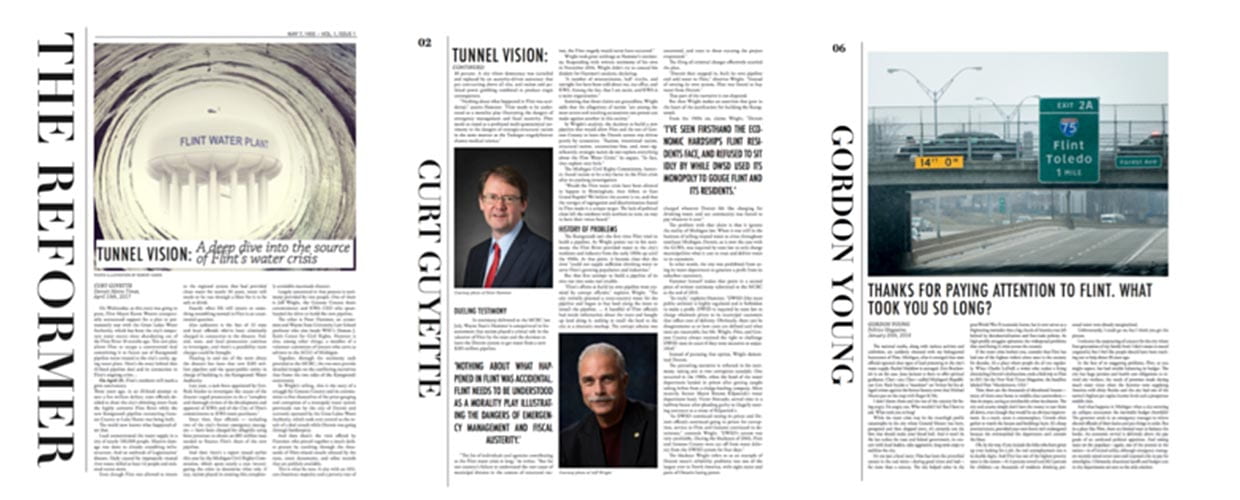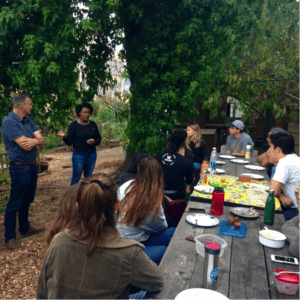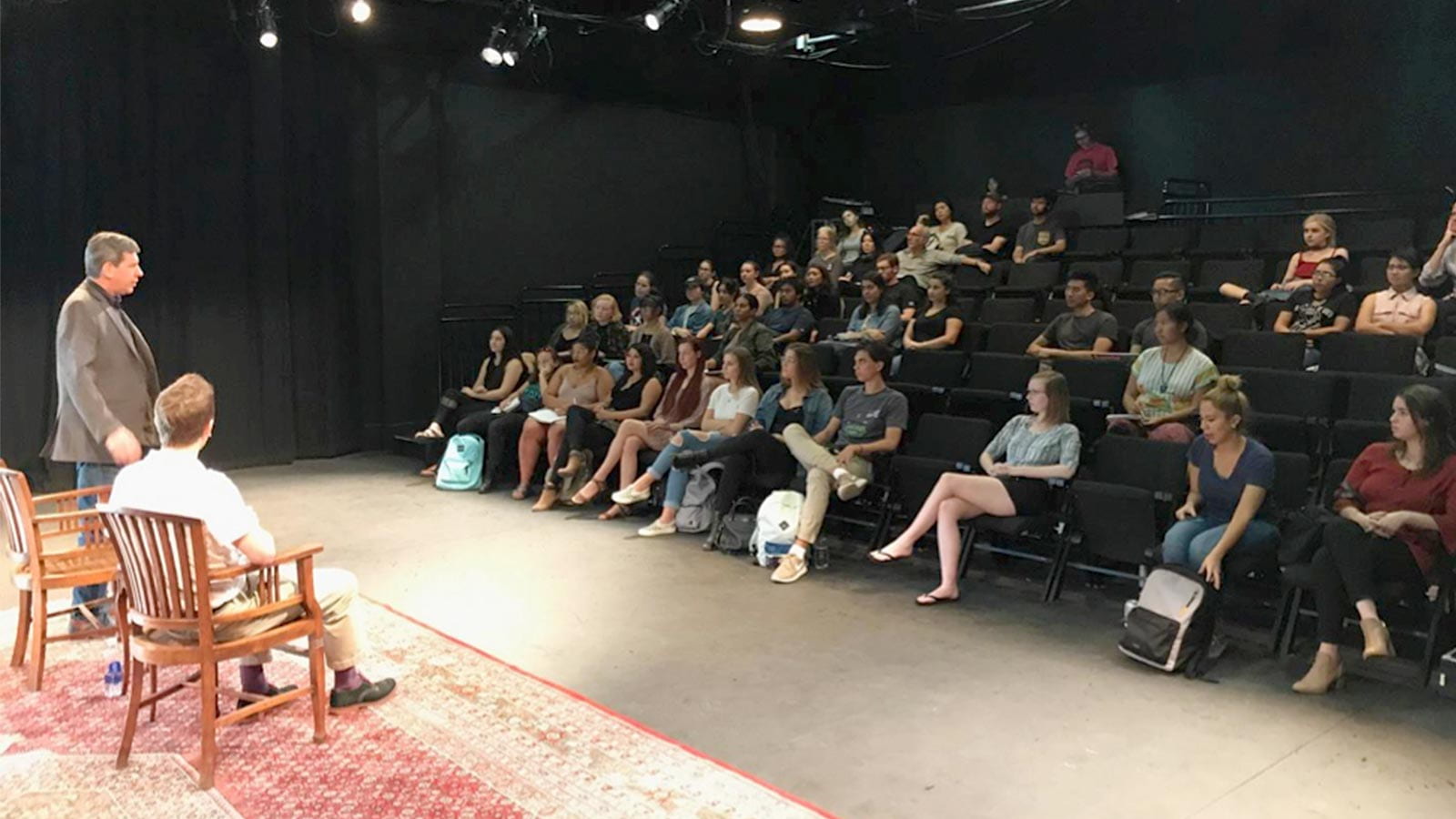A Series of Events sponsored by a CRASE Interdisciplinary Action Group Grant
Event #1: Public Enemy, an Adaptation of Henrik Ibsen’s An Enemy of the People
Produced by the Performing Arts and Social Justice Program

On April 25, 2014, water officials from Flint, Michigan celebrated as they pushed the button that moved the city’s water supply from the Detroit River, which had supplied it for decades, to the heavily polluted Flint River. The benefits were almost purely financial.
It should have been a clear sign when a General Motors plant in Flint switched back to the Detroit River in October because the Flint water was corroding its machinery. In September of 2015, state regulators should have believed the doctor who found that the levels of lead poisoning in children doubled after switching from the Detroit River to the Flint River. But they didn’t. The water disaster in Flint, Michigan was predictable, foreseeable, and totally preventable. Simple chemical treatment, at $200 a day, would have prevented the pipes from corroding and leeching lead and other pollutants into the water. While some officials are being held responsible, the issues that continue to plague Flint were caused by systemic and environmental racism.1
The Performing Arts and Social Justice program’s decision to produce a play by Henrik Ibsen, originally written in 1882, might seem to be out of date. Nothing could have been further from the truth. The play, about a doctor who discovers that the town’s water, on which it relies heavily for tourism to its spas, is polluted and will kill those who come into contact with it, mirrored the issues faced by the citizens of Flint Mi and dozens of other cities around the United States.
The history of disease carried by water was well known during Henrik Ibsen’s day. Four decades before Ibsen wrote An Enemy of the People in 1882, an English doctor named John Snow was the first to prove that cholera was transmitted by polluted water, though he did not know its cause at the time. Ibsen wrote the play based on an actual occurrence—an outbreak of cholera discovered by a physician in the spa-town of Teplitz. After the doctor made the discovery public, the town had a ruinous season and the citizens stoned the doctor’s house, forcing him to flee the town.
But who would have thought that we would be addressing these issues today—from the scarcity of safe drinking water in Puerto Rico after a natural disaster, to the man-made disaster of lead-poisoning in the town of Flint, Michigan—almost 130 years after Ibsen penned this work. In 2010, the United Nations General Assembly explicitly recognized the human right to water and sanitation as essential elements to the realization of all human rights, and yet the World Health Organization estimates that 40% of all deaths worldwide are a direct result of pollution to air, water, and soil. In this political climate, we must continue to trust science and pursue the healing of the population through a restoration of our planet.
Event #2: Journalists Respond to the Crisis
With help from the USF Foghorn and permission of the Detroit Metro Times and Journalist Gordon Young, USF recreated news articles from two authors who have helped bring the water issues of Flint to the national spotlight.
- Tunnel Vision: A deep dive into the source of Flint’s water crisis. By Curt Guyette, published originally by the Detroit Metro Times.
- “Thanks for Paying Attention to Flint. What Took You So Long” by Gordon Young, originally published in Politico Magazine.

Event #3: Public Lectures by Professors Alice Kaswan (USF Law School), and Jack Lendvay (Environmental Science)
 Professor Alice Kaswan lectures on the history of Environmental activism in the United States and how the issues in Flint, Michigan are entwined with the issues of systemic racism. Professor Jack Lendvay lectured on the specific issues of water pollution specifically and how industrial production has resulted in massive pollution of the nation’s water supply.
Professor Alice Kaswan lectures on the history of Environmental activism in the United States and how the issues in Flint, Michigan are entwined with the issues of systemic racism. Professor Jack Lendvay lectured on the specific issues of water pollution specifically and how industrial production has resulted in massive pollution of the nation’s water supply.
Event #4: Students Respond


Professor David Silver’s class creates t-shirts, buttons, and displays about water safety and security for the production of Public Enemy. In the photo below, assistant director Kayla Robinson (PASJ major, ’20) discusses the themes of the show and the issues of Flint for David Silver’s course.

Event #5: Librarian Carol Spector developed a public resource list of issues related to the Flint water crisis
 Event #6: Public Lecture by Curt Guyette and Gordon Young
Event #6: Public Lecture by Curt Guyette and Gordon Young
 Politicians, scientists, and public water officials all failed Flint, MI. From corruption to malfeasance, they attempted to cover-up the crisis in myriad ways. If it weren’t for journalists like Guyette and Young holding our officials responsible, the negligence might not have been exposed to the extent that it has. Indictments of many officials have been issued and the trials are just now beginning.
Politicians, scientists, and public water officials all failed Flint, MI. From corruption to malfeasance, they attempted to cover-up the crisis in myriad ways. If it weren’t for journalists like Guyette and Young holding our officials responsible, the negligence might not have been exposed to the extent that it has. Indictments of many officials have been issued and the trials are just now beginning.